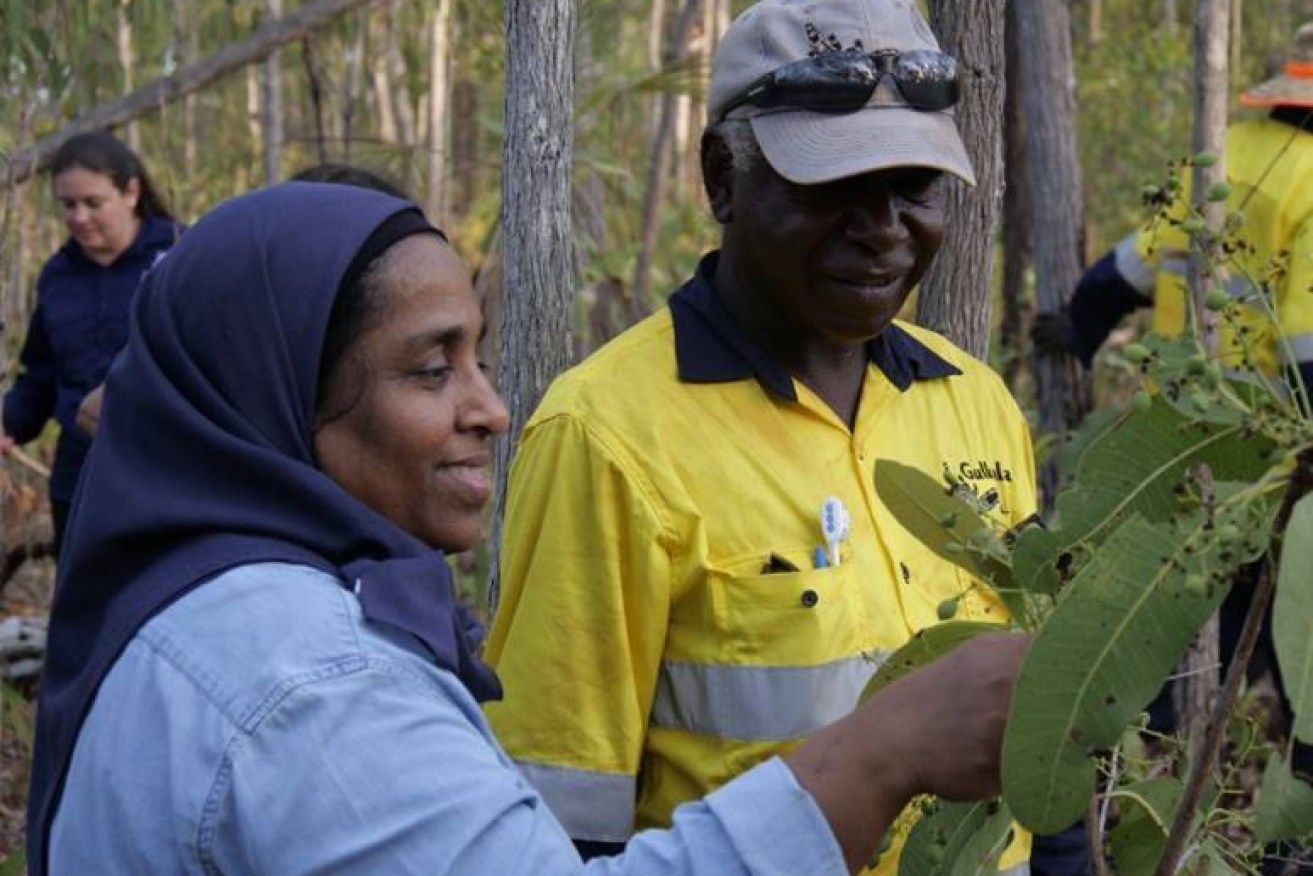How our indigenous communities revived ancient ‘super food’
Indigenous communities in northern Australia are working with international researchers to revive an ancient superfood that promises to deliver health and economic benefits.


Yasmina Sultanbawa and Kevin Wanambi inspect trial plantings of green plum trees.
The green plum – sometimes known as the ‘wild mango’ – grows abundantly in the Top End of the Northern Territory, providing a food source for Aboriginal people as far back as 53,000 years ago according to recently unearthed evidence.
“It’s probably one of the most delicious foods I have ever tasted – it’s very sweet, a bit like stewed fruit,” says Selina Fyfe, a food scientist undertaking a PhD on the native fruit.
“The research has already found the green plum’s flesh is high in protein, dietary fibre, folate, potassium and is a good source of magnesium, calcium and phosphorous.”
As one of the earliest known plant foods eaten in Australia, the green plum has been kept a closely guarded secret by the Indigenous communities who have tended and harvested the fruit for millennia.
That’s all about to change according to Associate Professor Yasmina Sultanbawa, the leader of the University of Queensland research team, who says the green plum contains one of the highest known folate levels of any fruit on the commercial market.
“This is really exciting because folate is an important B-group vitamin, and what’s great about the green plum is that the folate is in a natural form so the body absorbs it more easily than in a capsule,” Sultanbawa said.
Folate performs many functions in the body, including helping cells work and tissues grow, and is regarded as essential for the healthy development of the foetus during pregnancy.
With funding from the Australian Research Council’s Industrial Transformation Training Centre’s program for Uniquely Australian Food, Sultanbawa’s team is undertaking the world’s first detailed study of the nutritional characteristics of the green plum (Buchanania obovata).
Sultanbawa said the study would not have been possible without the assistance of the people of East Arnhem Land and Delye Outstation in the Northern Territory, who have been prepared to share their knowledge of the plant’s physiology and its many applications for good health and healing.
Their insights are also being shared with researchers in Germany who are working to provide a more detailed nutritional profile of the fruit.
“Once we get the scientific evidence about its nutritional value, chemical composition, the different maturity stages, and best time to harvest, then we can work with the communities to get it into the market as a commercial product.”
Research has revealed that the seed of the green plum is also rich in dietary fibre, iron and vitamin B9.
The green plum belongs to the family Anacardiaceae which contains well-known commercialised fruit including mango, cashew apple and pistachio nuts.
It is a wild-harvested, seasonal fruit that typically ripens after the first rains of the wet season in late November and early December.
The fruit is eaten raw from the tree or as dried fruit, and the plum’s flesh and seed can also be mashed into an edible paste.
Sultanbawa said the green plum was traditionally used as food and medicine in Aboriginal communities across the Top End of Australia and was very popular with the children and elderly.
“The green plum has so much goodness, it could one day help with dietary issues like the triple burden of malnutrition – undernutrition, obesity and micronutrient deficiencies – known as hidden hunger,” Sultanbawa said.
“The green plum is a sweet fruit that consistently rates highly in the consumer taste tests we’ve run in Brisbane and could one day be as popular as table grapes.”
While commercialisation is still some way off, the first steps toward that development have been taken this year, with staff at the Aboriginal-owned Gulkula nursery in Gove, East Arnhem Land, successfully propagating the green plum – believed to be a world-first.
This was followed by the Arnhem Land Progress Aboriginal Corporation organising a trial harvest in a bid to further assess the fruit’s potential as a cash crop for the region in the future.
Sultanbawa said legal and social science researchers, and other partners would work with Indigenous communities to undertake enrichment planting and develop enterprises that ensure Indigenous community ownership and control.








